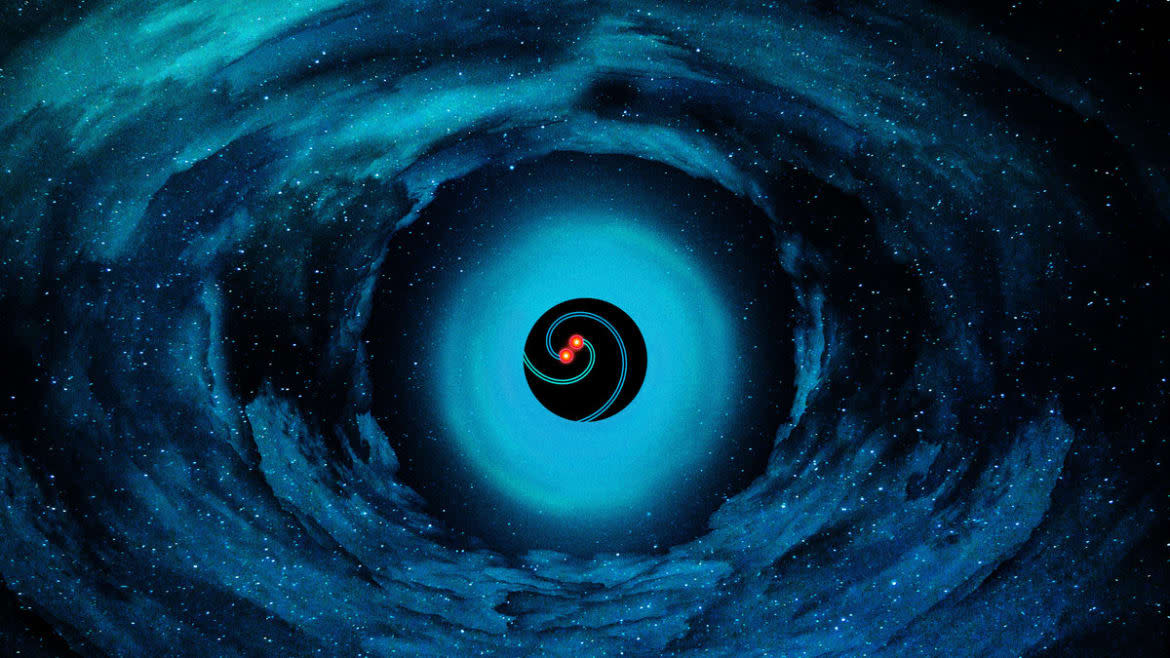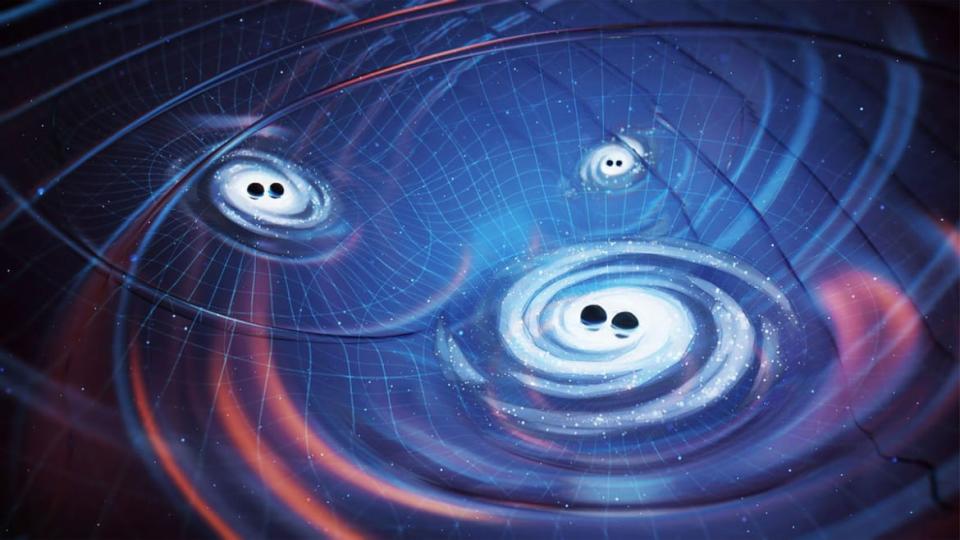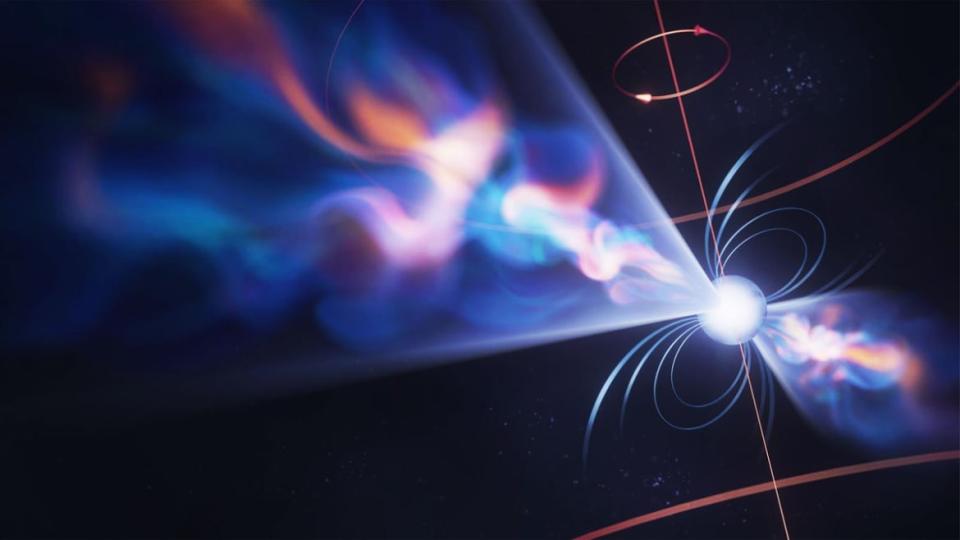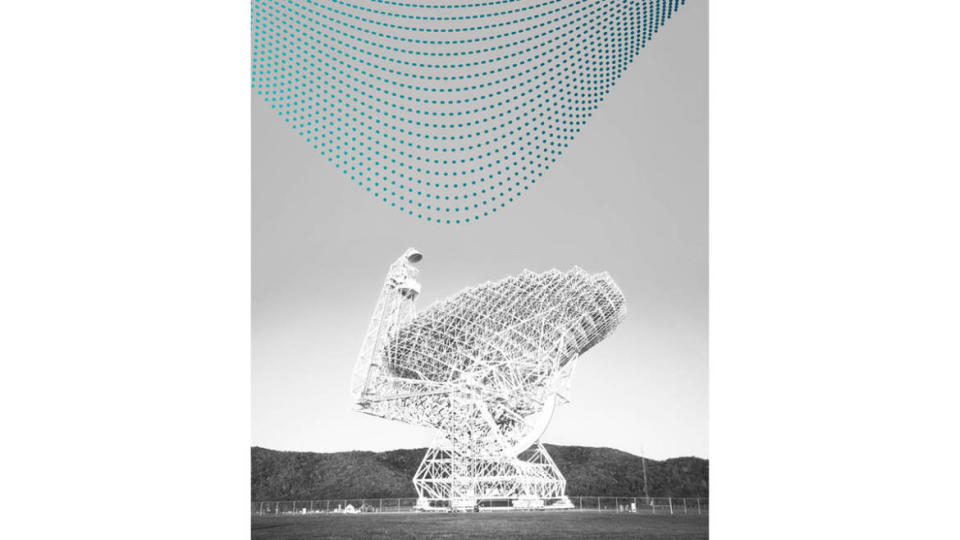Scientists May Have Finally Heard the ‘Hum’ of the Big Bang

Things are about to change in a supermassive way in the world of astrophysics. An international team of scientists have discovered evidence for a new type of signal they have long searched for—one that will give us a greater understanding into black holes, and the origins of galaxies and the universe as we know it.
The team, coordinated by the North American Nanohertz Observatory for Gravitational Waves (NANOGrav), announced Wednesday that they have discovered evidence of the gravitational wave background (GWB). This is a type of signal emitted by the universe’s population of colliding galaxies and supermassive blackholes—also known as binary blackholes. Scientists believe it may also contain faint traces of the gravitational ripples produced by the Big Bang.
While scientists have long theorized that the gravitational wave background existed, they haven’t been able to gather such strong evidence for its existence and impact on the universe until NANOGrav’s latest success. GWB signals can be thought of as an entirely new way for scientists to observe and study some of the most intense yet consequential events in the entire universe. As such, they’re expected to have incredibly long-lasting implications for the future of astrophysics.

Galaxies and Supermassive Black Holes Galaxies have evolved through cosmic time through consecutive mergers with other galaxies. We will gain unique insights into this important process by detecting the gravitational waves produced by extremely massive pairs of black holes at the cores of merged galaxies.
The NANOGrav collaboration, which is made of more than 190 scientists from the U.S. and Canada, published its findings Wednesday in a set of papers in The Astrophysical Journal Letters.
“This will be the first definite piece of evidence that these massive black holes form binaries, and they get close enough to each other to produce strong gravitational waves,” Scott A. Hughes, a professor of physics at MIT who specializes in black holes and gravitational wave sources but wasn’t part of the study, told The Daily Beast. “It’s the first piece of evidence that says we’re on the right track and this is something we want to continue digging into.”
A Cosmic Gamble
Every object in the universe that’s made of matter produces gravitational waves. Before they were finally discovered last decade, experts have long thought these gravitational waves ring out consistently through the universe. Albert Einstein even predicted the existence of gravitational waves in the Theory of General Relativity in 1915.
But you can’t just pull out a ruler and measure them. And most gravitational waves are extremely minute—the only way scientists can observe them is to detect the biggest ones. When two black holes collide, the resulting force is so strong that gravitational waves ripples out in the very fabric of spacetime like a rock thrown into the surface of a pond. They are the only kind of gravitational waves we can observe, at least for now.
The first gravitational wave to be observed was detected by the Laser Interferometer Gravitational-wave Observatory (LIGO) nearly 100 years after Einstein’s equations were released. The detector was made of two perpendicular arms roughly 3 miles long. Each contained a laser beam that was sent down the length of each. The idea was that if a wave in spacetime rippled over LIGO, one of the lasers would shorten and the other would lengthen by less than the size of a proton. That’s a nearly undetectable amount—but only nearly.

A rendering of the LIGO India site in the state of Maharashtra.
In 2015, the detector picked up on gravitational waves created by two black holes roughly 30 times the size of the sun that collided about 1.3 billion years ago. While the signal was nearly imperceptible, LIGO’s powerful sensors were able to detect them—providing the first piece of evidence that gravitational waves existed. The findings were reported to the world the following February.
Thus, LIGO was successful. But it was considered to be a massive scientific and financial gamble.
“It was one of those things where there was no question that it would work if nature provided the sources—but that was a big if,” Hughes said. “It was unclear whether it was going to be the kind of thing where they would be measuring a couple of sources a year or a couple sources a century, there was enough uncertainty in the astrophysics that that is what the concern was.”
Researchers knew that as powerful as LIGO was, it was still incredibly limited. Paradoxically it was optimized to detect gravitational waves in a sort of middle ground: It could pick up on gravitational waves created by “small” black holes with the size and mass of perhaps 20 to 100 suns. However, LIGO can’t pick up on supermassive black holes the size of hundreds of millions or even billions of suns.

Low-Frequency Gravitational Waves. Gravitational waves are ripples in space-time predicted by Einstein's theory of general relativity. They are produced by accelerating masses and can be used to study objects like black hole binaries which do not emit visible light. Our experiment is sensitive to low-frequency gravitational waves with periods of years to decades.
Think of it as a bell, Hughes explained. The pitch of a bell depends on its size. The smaller it is, the higher pitch it will sound. The bigger it is, the lower the pitch. Currently, LIGO’s “ears” are so small that it can only hear the small bells ringing—while the big ones go completely unnoticed. To hear the big ones, we’d need ears that span the width of a galaxy.
Luckily, one scientist by the name of Steven Detweiler realized in 1979 that we already had such an instrument scattered around the Milky Way: pulsars. These rapidly spinning neutron stars act essentially as clocks. “If you stare at a neutron star for years, its frequency remains as stable as some of the best atomic clocks that we have here on Earth,” Hughes explained.
That’s the idea behind the pulsar timing array, an effort by NANOGrav to observe and collect data from 58 pulsars throughout the Milky Way. Over time, astronomers watched for variations that would indicate that there are gravitational waves that have been generated by distant supermassive binary black holes passing through our galaxy.

Pulsars as Cosmic Clocks Neutron stars are the collapsed cores of massive stars which have ended their lives in cataclysmic supernova explosions. Pulsars are rapidly rotating, highly magnetic neutron stars which emit beamed radio emission, like cosmic lighthouses. They are unique laboratories for a variety of fundamental physics experiments.
These variations are incredibly tiny—maybe a slight delay or advance in how it pulses—but predictable enough for scientists to understand that they’re coming from gravitational waves. These signals are coming from massive cataclysmic events like galaxies colliding, or the collapse of a massive star as it dies—and we’re finally starting to pick up on it.
In essence, scientists have created an observatory the size of the galaxy to study some of the oldest and most extreme events in the history of the universe.
Background Music
The next time you’re in a crowded room—maybe a party or a restaurant—listen to the noise around you. At first, the background noise sounds almost like a hum as all the voices merge together. But if you concentrate on it a little bit, you’ll eventually be able to make out individual conversations or even voices.
This is what astronomers are trying to do with gravitational waves by way of the gravitational wave background. From this hum, scientists have already been able to gain insights into questions about black holes that have plagued them for years. For example, before these insights, astronomers weren’t sure whether or not supermassive binary black holes orbited one another forever without actually merging and creating a gravitational wave.
“But now we finally have strong evidence that many of these extremely massive and close binaries do exist,” Luke Kelley, an astrophysicist at University of California, Berkeley and a chair of NANOGrav’s astrophysics group, said in a statement. “Once the two black holes get close enough to be seen by pulsar timing arrays, nothing can stop them from merging within just a few million years.”

The 100-meter Green Bank Telescope, the world's largest fully steerable telescope and a core instrument for our pulsar timing array experiment.
However, as scientists learn more about gravitational waves and refine the instruments used in the pulsar timing array, they’ll get better at listening in that crowded room. Instead of just hearing the din of conversations, they’ll be able to zero in on conversations or listen to individual voices.
“We expect that somewhere in this population of black hole binaries, there may be one or two that are just, by luck of the draw, a little closer to us or a little bit more massive so they make stronger signals,” Hughes said. “They will stand up above the background. Once that begins to happen, we can measure things a little more precisely in detail.”
This announcement and its papers are just the beginning, according to Hughes. Remember: We’re currently listening to the small and big bells. Those are just two frequencies. There are a whole lot more frequencies out there when it comes to gravitational waves. That means we have even more ways to detect and observe a universe that has been shouting out to us for billions of years.
Luckily, we’re finally starting to listen.
“It's like a proof of principle,” Hughes said. “There's a whole lot more exciting stuff that's out there.”
Get the Daily Beast's biggest scoops and scandals delivered right to your inbox. Sign up now.
Stay informed and gain unlimited access to the Daily Beast's unmatched reporting. Subscribe now.

